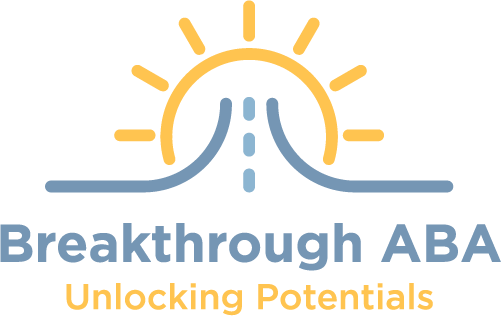Published by Breakthrough ABA
When a child is diagnosed with autism, one of the first steps many families take is exploring therapy options. With so many interventions available, understanding the differences can feel overwhelming. 😅 One of the most widely recommended approaches is Applied Behavior Analysis (ABA), but how does it compare to other common autism therapies?
At Breakthrough ABA, we want to help you make informed decisions for your child. 🧠💙 Below, we break down how ABA therapy compares to other popular interventions and explain why it continues to be a trusted choice for many families.
🧠 What Is ABA Therapy?
Applied Behavior Analysis (ABA) is a science-based approach that focuses on teaching meaningful skills and reducing behaviors that interfere with daily life. 🌟 ABA therapy is individualized to each child and involves data-driven techniques that promote consistent progress. 📈
💡 Core features of ABA:
- Evidence-based and widely endorsed by medical and psychological associations
- Tailored goals that target communication, social skills, daily routines, and more
- Involves consistent data collection and regular review by a Board Certified Behavior Analyst (BCBA)
- Often delivered in 1:1 settings either at home, in clinics, or in the community
🧩 Other Common Autism Therapies
Let’s look at how ABA compares to several other therapies that may be recommended for children with autism:
- Speech Therapy 🗣
- Focus: Helps children improve verbal and nonverbal communication skills.
- Who Provides It: Licensed Speech-Language Pathologists (SLPs).
- How It Compares to ABA: Speech therapy and ABA can work hand-in-hand. While speech focuses specifically on communication, ABA addresses a broader range of behavioral and functional skills. Many ABA programs include goals that support or complement speech therapy.
- Occupational Therapy (OT) .🖐
- Focus: Builds skills for daily living, such as dressing, feeding, handwriting, and sensory regulation.
- Who Provides It: Licensed Occupational Therapists.
- How It Compares to ABA: OT and ABA can be highly complementary. ABA can help reinforce the use of daily living skills taught in OT. In fact, many children benefit from receiving both therapies as part of a coordinated care plan.
- Developmental or Play-Based Therapies (e.g., DIR/Floortime) 🎲
- Focus: Emphasizes emotional connection, social interaction, and play.
- How It Compares to ABA: Play-based approaches prioritize relationship-building and emotional expression through child-led play. ABA, while structured, can also incorporate play and social engagement—but with a focus on measurable skill development. Some families prefer blending elements of both.
- Speech/OT Groups or Social Skills Groups .🗂
- Focus: Often target peer interaction and communication in a small-group setting.
- How It Compares to ABA: Social groups are valuable for practicing real-time interaction. ABA can help prepare a child with the foundational skills needed to succeed in group settings. ABA-based social skills groups also exist and may include more direct teaching and reinforcement.
- Alternative or Complementary Therapies (e.g., Music Therapy, Animal-Assisted Therapy) 🎶
- Focus: Uses music, animals, or movement to engage children and promote well-being.
- How It Compares to ABA: These therapies may provide emotional or sensory benefits but are often not as structured or goal-oriented as ABA. They are best used as supplements rather than replacements for evidence-based interventions.
🧭So, Which Therapy Is Best?
There’s no one-size-fits-all answer. The best therapy plan depends on your child’s unique needs and goals. However, ABA stands out because:
- It’s backed by decades of research
- It’s customizable for each child
- It targets both skill development and behavior
- It works well in combination with other therapies
ABA therapy isn’t meant to replace every other intervention—it often works alongside them. At Breakthrough ABA, we believe in a collaborative, whole-child approach. Whether your child is receiving speech, OT, or play-based therapy, ABA can help bring it all together with consistent strategies, clear goals, and measurable progress.
